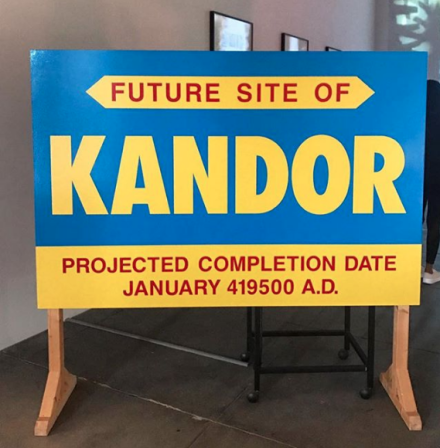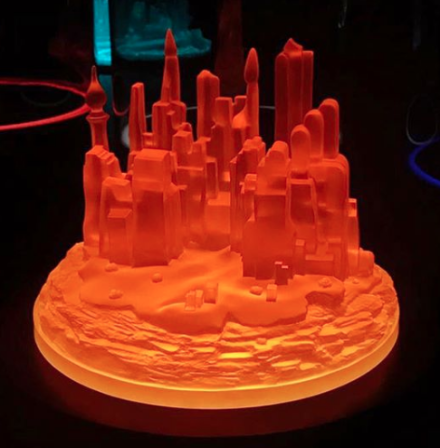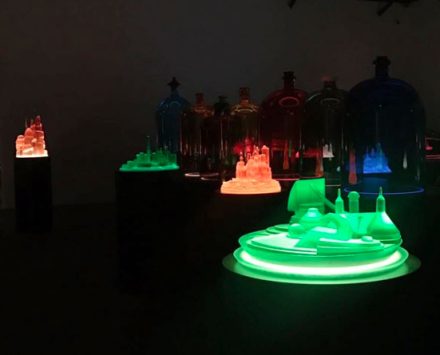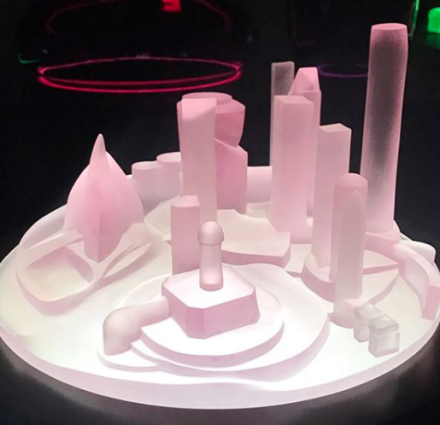
Mike Kelley, Kandors 1999-2011 (Installation View), via Art Observed
Considering artist Mike Kelley’s enduring relationship and engagement wiht the landscape of Los Angeles, the return of the artist’s famed Kandors series to Hauser & Wirth in the city’s Arts District feels like something of a victory lap for the artist’s works. The Kandors, which have made their rounds over the past several years, showing in New York, Europe, and elsewhere, represent one of Kelley’s final bodies of work before his untimely passing, and perhaps his most elaborate engagement with the language of pop culture, and the varied convergences of mythology and psychology that so often make up the language of the best American cultural iconographies.

Mike Kelley, Kandors 1999-2011 (Installation View), via Art Observed
The Kandors make up a simple concept. Drawing from the origin myth of Superman (originally named Kal-El), Kelley has re-created a series of his own iterations of the superheroes home city of Kandor, a shrunken iteration of which was salvaged from destruction and now resides in his northern stronghold. Serving as a metaphor for both Superman’s inherent alienation from the human race, and his failure to protect his own home from destruction, the works served as a fitting parallel for Kelley’s own practice in exploring his own psychological landscape. Comparable to his re-creations of various school campuses in Educational Complex, the works serve as both an exploration of Kelley’s own past in relationship to that of Superman’s, and in turn, a reflection of both artist and character’s own flawed states of being.

Mike Kelley, Kandors 1999-2011 (Installation View), via Art Observed
Presented here, Hauser & Wirth has also selected a series of the artist’s video and installation works exploring the Superman character. Kandor-Con 2000 and Kandor 10B (Exploded Fortress of Solitude) are both on view here, reflecting Kelley’s interest not only in the Superman myth’s own structural trappings (the hero’s fortress is presented here after its destruction), but equally in the act of myth-making that the comic book’s fans have participated in at the same time. Kelley’s work maps out a world where the language and meanings of Kandor evolve in tandem with the development of the myth itself. As much as his the artist takes interest in the construction of Kandor itself, and the frequent appearances of its skyline in the comic book itself, the viewer’s participation, their active engagement with these aspects of the original storyline become part of the full understanding and appreciation of the work.

Mike Kelley, Kandors 1999-2011 (Installation View), via Art Observed
Presented here, Hauser & Wirth presents an opportunity to delve deeper into Kelley’s work, and the comic itself in tandem, exploring both the works on hand, and the connecting information that serves to unify and elaborate on Kelley’s complex and challenging vision of Americana. The show is on view through January 21st.

Mike Kelley, Kandors 1999-2011 (Installation View), via Art Observed
— D. Creahan
Read more:
Hauser & Wirth [Exhibition Site]



